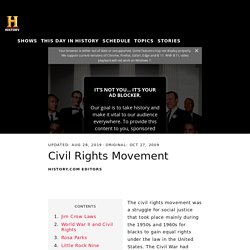

Pop in the age of the atomic bomb. On 11 October 1962, the Beatles' first single for EMI, Love Me Do, entered the UK charts.

Four days later, the Cuban missile crisis began, when a US reconnaissance plane spotted Soviet missile bases in Cuba. In the days that followed, the world teetered on the brink of nuclear war. As a Soviet general later said, Earth was "minutes" away from "catastrophe". The Beatles' extraordinary breakthrough from that date onwards has been put down to a variety of factors, not the least the quality of their music.
⚡Presentation "America in the 1950s The Eisenhower Era. American Society The Baby Boom –Between 1946 and 1961, 63.5 million babies –Effects Short term Long term." ⚡Presentation "Origins of the Cold War. 2 US/USSR Relationship during WWII 1939: Stalin (USSR) makes a deal with Hitler (Germany). 1941: Hitler breaks deal and attacks." History: Cold War. How pop culture helped win the Cold War. The Bolshoi Ballet's Galina Ulanova in London in October 1956 receiving a bouquet of flowers from the Director-General of the BBC For many people, as our series shows, the great paradox of the Cold War was that it was at once utterly terrifying and strangely glamorous.

One example tells a wider story. Almost exactly 50 years ago, the dust was still settling after the high-stakes brinkmanship of the Cuban Missile Crisis, when the world had come closer than ever before to nuclear annihilation. Now, a year on, Fleet Street reported a new twist in the nuclear game, with the news that France’s Mirage 4 bombers had just come into commission. Yet the papers in October 1963 devoted rather more attention to a very different story – a second cinematic outing for a secret agent who, as one critic put it, “acts out our less reputable fantasies without ever going too far”. From Russia with Love (1963): with Sean Connery as James Bond and Daniela Bianchi as Soviet embassy clerk Tatiana Romanova. POST WAR POLITICS. Extended Standards. History of the Atomic Age. Post World War. Home | 6th-15th centuries | 16-17th centuries | 18-19th centuries | 1901 to World War II Victors, Independence Movements and Cold War.

The Great Depression - Facts & Summary. Hoover, a Republican who had formerly served as U.S. secretary of commerce, believed that government should not directly intervene in the economy, and that it did not have the responsibility to create jobs or provide economic relief for its citizens.

In 1932, however, with the country mired in the depths of the Great Depression and some 15 million people (more than 20 percent of the U.S. population at the time) unemployed, Democrat Franklin D. Roosevelt won an overwhelming victory in the presidential election. By Inauguration Day (March 4, 1933), every U.S. state had ordered all remaining banks to close at the end of the fourth wave of banking panics, and the U.S. Treasury didn’t have enough cash to pay all government workers.
Nonetheless, FDR (as he was known) projected a calm energy and optimism, famously declaring that “the only thing we have to fear is fear itself.” Civil Rights Movement - Black History. The civil rights movement was a struggle for social justice that took place mainly during the 1950s and 1960s for blacks to gain equal rights under the law in the United States.

The Civil War had officially abolished slavery, but it didn’t end discrimination against blacks—they continued to endure the devastating effects of racism, especially in the South. By the mid-20th century, African Americans had had more than enough of prejudice and violence against them. They, along with many whites, mobilized and began an unprecedented fight for equality that spanned two decades. Jim Crow Laws During Reconstruction, blacks took on leadership roles like never before. In 1868, the 14th Amendment to the Constitution gave blacks equal protection under the law. To marginalize blacks, keep them separate from whites and erase the progress they’d made during Reconstruction, “Jim Crow” laws were established in the South beginning in the late 19th century.
World War II and Civil Rights Rosa Parks Sources. United States Holocaust Memorial Museum. Digital Public Library of America. Facing History and Ourselves. Cold War Museum.